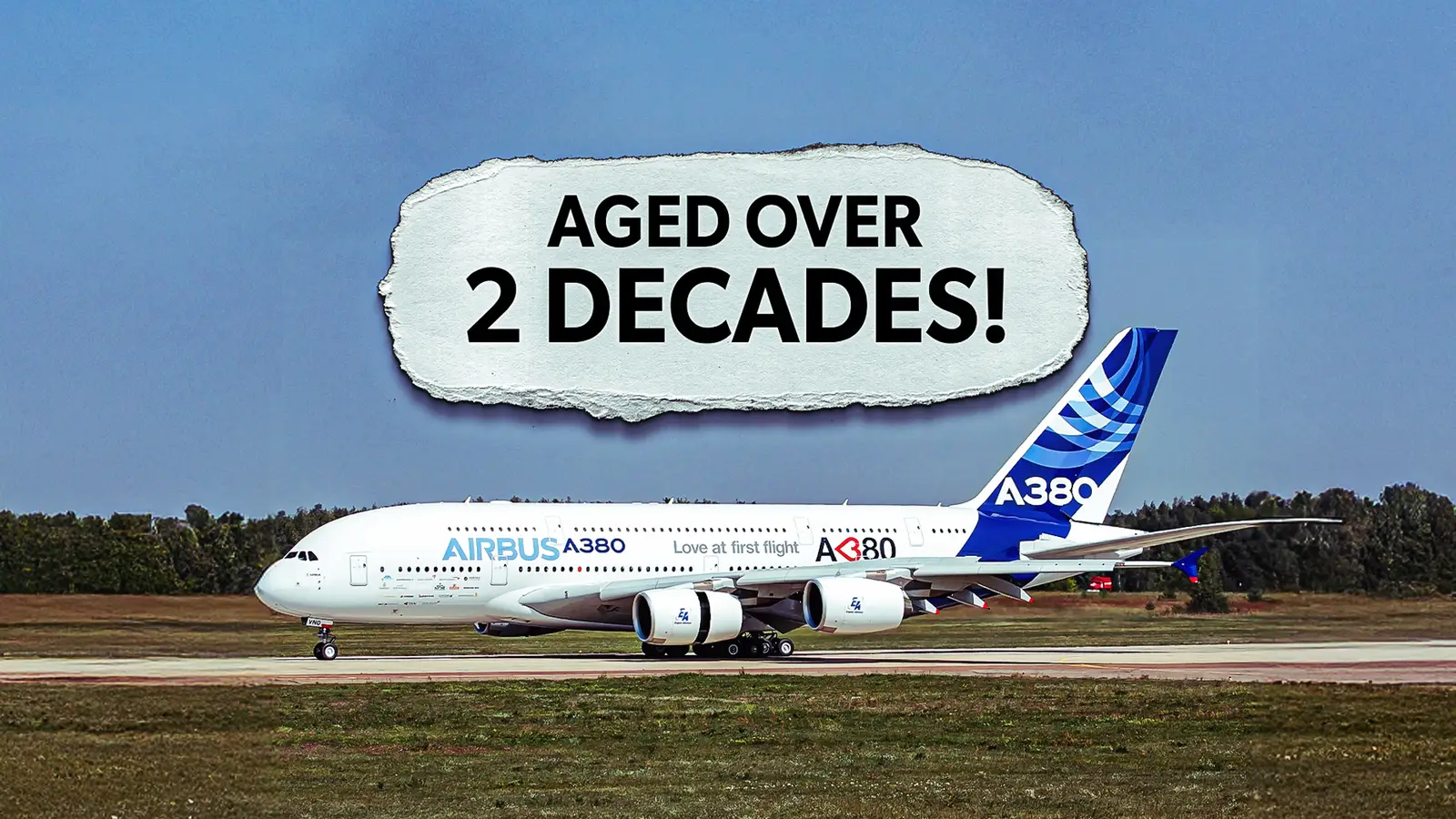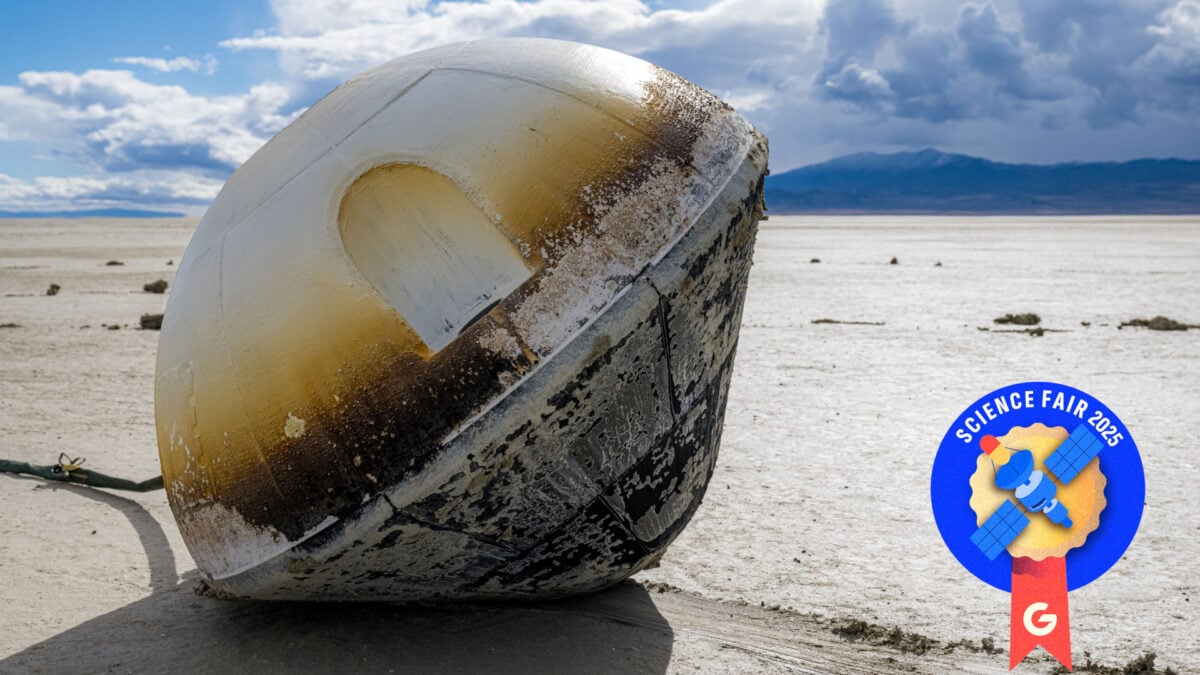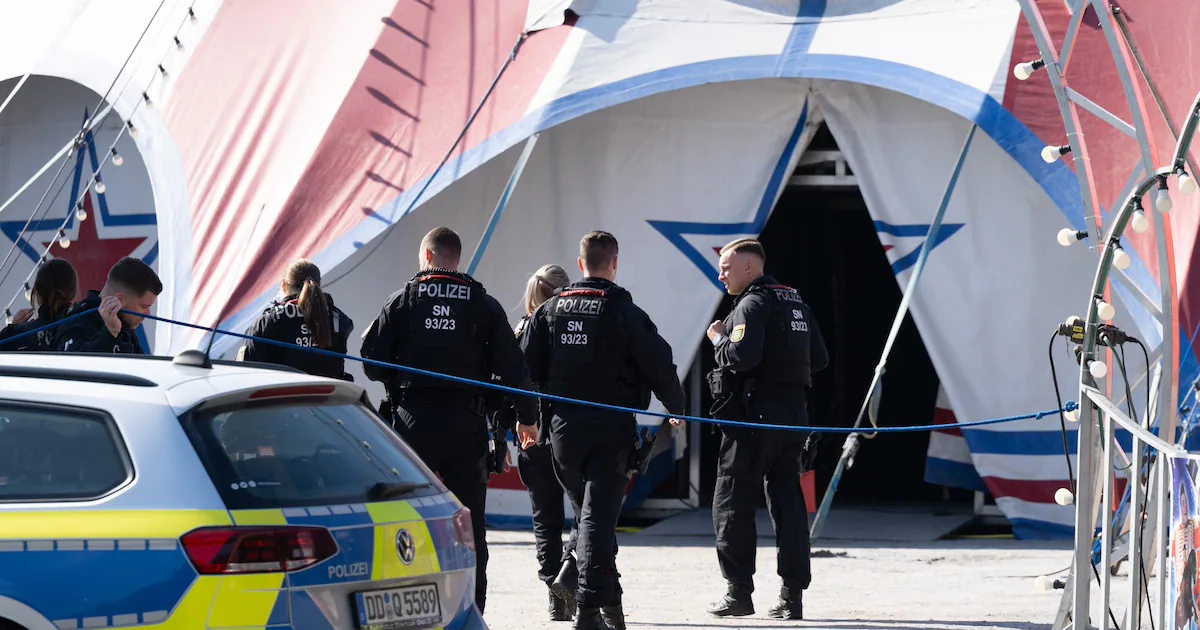
Long before any metal ever touched the production floor, Airbus laid the keel of its first A380, which was simply referred to as MSN 001 within the firm. The very first Airbus A380 would be given the tail number F-WWOW and become the biggest passenger plane ever constructed. There were 14 launch customers and 149 orders for the A380 on the books by the time it finished certification.
In January 2005, Airbus drew back the hangar doors and unveiled the completed aircraft to the world and a crowd of 5,000 people under theater lights bright enough to compete with lasers and a stage performance, as Airways records. The aircraft itself was still more of a laboratory than an airliner at the time. Computer racks, miles of wiring, and plastic tanks that could be filled with water to simulate passengers and luggage in various seating configurations were all mounted inside the cabin.
Three months later, test pilots eased the giant onto the runway for what would be a flawless first flight. The enormous engines took Airbus’ largest aircraft ever, and the biggest passenger plane in history, into the sky and the pages of history. That first hop launched a marathon of proving flights that lasted almost two years before the production line began rolling out “super jumbos” for customers.
The Trials Of The First Super Jumbo
In order to prove its tires, brakes, and electronics could handle the harshest heat, Airbus flew the aircraft in tests on hot afternoons in the Arabian desert. Showing that the cabin could equalize pressure without fogging windows or bursting seals, MSN 001 ascended into the thin, chilly air over Northern Europe and then quickly descended in a display of handling stability as well.
To ensure that the massive plane would be safe to fly even at the limit of its performance profile, test pilots practiced refused takeoffs, slammed the gear on runways at various weights, and tried to induce unstable motions in the wings. Test pilots try to break an aircraft just as much as they try to fly it, and MSN 001 was no exception.
Data poured off the airplane and into the offices of engineers, who sifted through the numbers looking for anything of concern. A valve that opened a fraction too slowly, a warning light that blinked once when it should have blinked twice. Whenever something looked suspicious, the team corrected the software, swapped a part, or ordered another flight to double-check the fix.
By late 2006, European and American authorities reviewed the thousands of hours of flight data, and the endless tests. Including photographs of wing spars cut open to prove there were no hidden cracks, before they agreed that passengers could safely board an A380 for commercial service.
When the type certificate was finally issued in 2006, the men and women who had shepherded MSN 001 from a list of parts to a soaring giant continued their work. The prototype still carried its forest of cables and test equipment, but every production airplane that followed owed its birth certificate to the trials of that one, hard-working machine and the team behind it.
MSN 001 Goes To Pasture
The fate assigned to MSN 001, or F-WWOW, was storage rather than the scrapyard. The large aircraft was sent to Tarbes-Lourdes, as Airport Spotting says. It is a unique airfield nestled against the French Pyrenees with a jumbo jet scrapyard and ample parking for stored aircraft. Ground crews put protective coverings over each engine intake, drained the water systems, flushed the fuel lines, and silvered the cockpit screens of the jets not yet destined for the scrappers.
The plane sat on concrete pads outside the apron, its wings properly leveled by hydraulic jacks to prevent them from sagging. Airbus kept its historic airliner in a state of preservation to be called upon when needed again. A few years after its long nap began in the foothills of the Pyrenees, Airbus’s pioneering A380 prototype was awakened by a task that would have sounded like science fiction when the giant first flew: helping turn liquid hydrogen into a practical fuel for airliners.
Here’s a snapshot of the five oldest A380s still flying today, according to ch-aviation:
The idea took shape in 2020, when Airbus publicly committed to putting a zero-emission aircraft into airline service by the middle of the next decade. Engineers needed a flying platform big enough to haul bulky cryogenic tanks, a myriad of sensors, a team of specialists, and a completely new kind of engine that burns hydrogen. Reviving the old A380 prototype solved every one of those challenges at once.
F-WWOW Answers The Call
The idea to use the flying giant as the test bed for the ambitious program has been continuously under development despite events like the COVID-19 Pandemic and other economic disruptions to the aviation industry. Mathias Andriamisaina, Head of ZEROe Demonstrators and Tests at Airbus, remarked in a 2022 program press release:
“In terms of aerodynamics, the A380 is a very stable aircraft. So the pod attached to the rear fuselage via the stub doesn’t pose much of an issue. Furthermore, the airflows from the pod and its propeller do not affect the airflow over A380’s tail surfaces. With the A380 we also have an aircraft that’s already fully instrumented. The flight-test-instrumentation (FTI) is a big part of the project and can be a big driver in terms of cost and planning. So MSN001 was the perfect fit for us.”
The A380’s belly is so cavernous that huge insulated hydrogen tanks can be tucked into the rear fuselage while leaving plenty of extra space. Its wings and landing gear were already designed for weights far above what the test equipment adds. Just as crucially, the jet’s original four conventional engines will keep running during trials to give the crew a safety net while they push the hydrogen system to its limits.
Airbus and engine manufacturer CFM International decided to install a separate pylon on the left side of the fuselage, above the wing, to support a single, large-diameter “open-fan” engine that has been converted to run on hydrogen. By keeping it sufficiently away from the cabin, engineers can measure noise levels and emissions without interfering with the airflow over the main wings. Additionally, the crew may simply shut down the prototype engine and use the reliable Trent 900s under the wings to fly home in the event of an engine malfunction during flight.
Pioneering A New Era In Flying
All the action so far has been on the ground with pressure-testing the tanks, practicing rapid fuelling and defuelling, and running computer simulations to predict how the gas will behave as it warms from icy liquid to hot exhaust. The second half of this decade is when actual aerial hydrogen power testing is expected to take place. The initial flights will be cautious, starting with ordinary jet fuel, ascending to a safe height over open waters and carefully transitioning to hydrogen.
Later flights will extend the hydrogen-running times of the unique engine and investigate its performance at a variety of altitudes, temperatures, and throttle settings. Up to fifty engineers will monitor real-time fuel temperature, tank pressure, exhaust emissions, and vibration signatures within the utilitarian cabin.
There is what the team calls the “tent” inside the airplane. At the Technocentre de Nantes, an Airbus crew will construct the 10-meter-long by 4-meter-wide, parabolic-cross-section housing out of carbon fiber. This building has the capacity to hold up to four cryogenic tanks filled with liquid hydrogen. The air within the tent will have the same pressure as the air outside the aircraft during flight tests.
Airbus believes that with innovative engine design, it can minimize climate-warming byproduct of gases like nitrogen oxides. The maker’s publicly stated target is to apply everything learned from the A380 demonstrator to a brand-new single-aisle airliner that could enter service within a decade or so.
The Struggle Of The A380
The assembly line was shuttered in 2021 as a lack of new orders forced Airbus to end the production of the A380. The largest commercial jet in history was relegated to life support as its operators would never receive a new airframe. Many airlines have ceased flying their giant jumbo jets, including the launch customer, Singapore Airlines. The world remains fascinated and endeared by the ambition of the great plane, and at least one carrier has stuck fiercely to the type: Emirates.
Emirates now possesses about half of all the A380s ever made, and continues to lobby Airbus for an A380neo successor model. The request has remained unheeded as yet, so Emirates has acquired as many secondhand A380s as possible to keep its fleet of incredible jets in the air. Perhaps with the rise of alternative fuel, a return of the colossal jets could become viable. We will have to wait and MSN 001 embarks on a new journey of pioneering aerospace research.



